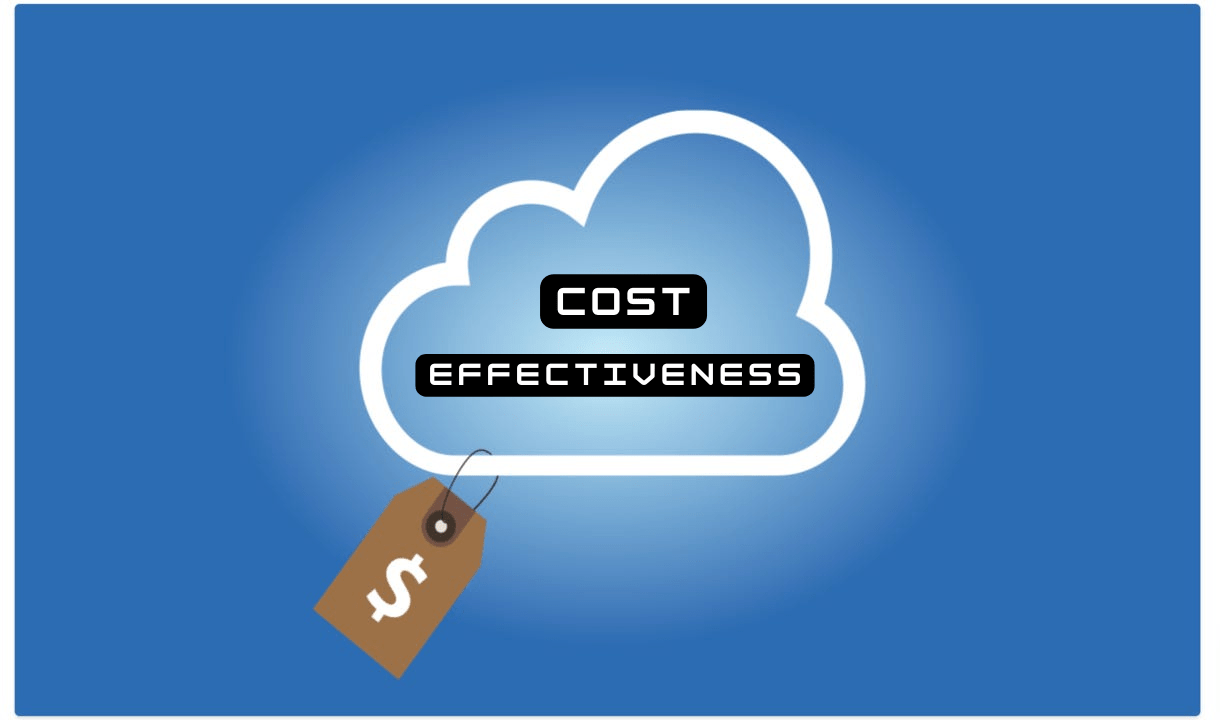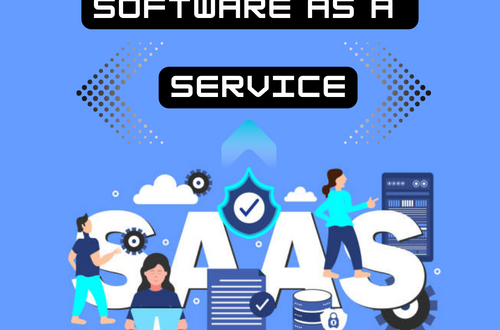As the cornerstone of contemporary corporate innovation in 2024, Software as a Service (SaaS) represents a radical shift in the way software is accessed, used, and exploited for organizational success. With this revolutionary paradigm, organizations of all sizes can benefit from unmatched flexibility, scalability, and efficiency without having to invest in expensive equipment or deal with time-consuming software installations. SaaS, which ranges from subscription-based services to cloud-based apps, enables businesses to improve communication, optimize processes, and increase productivity like never before. Furthermore, SaaS solutions are crucial enablers in the dynamic landscape of 2024, providing real-time analytics, tailored experiences, and quick reactions to changing market demands. SaaS appears to be the key to agility, resilience, and competitive advantage as companies negotiate the challenges of a digitally first world. Welcome to a new era in which software is a service designed to drive innovation, growth, and transformation across the board in business operations.
What is Software as a Service (SaaS)?

Software as a Service (SaaS), which offers a dynamic, subscription-based approach that is changing the digital landscape, completely transforms how businesses access and use software. Users benefit from the ease of internet-based application access in this novel paradigm, which does away with the requirement for expensive infrastructure and time-consuming installations. In today’s fast-paced world, SaaS gives enterprises the flexibility, scalability, and seamless updates they need to be competitive and nimble. SaaS solutions provide unmatched efficiency, accessibility, and value by meeting a wide range of needs, from customer relationship management systems to collaboration tools. Welcome to the future of software, where ease of use and power combine to revolutionize industries across the globe.
How does software as a service work?

The idea behind Software as a Service (SaaS) is straightforward yet effective: software is delivered online via subscription. Through a web browser, users can access apps, doing away with the requirement for complicated installations or upgrades. SaaS providers handle everything behind the scenes, from security to infrastructure, to guarantee dependable and smooth operation. Businesses can benefit from this cloud-based model’s scalability, flexibility, and affordability because they only pay for what they use. Furthermore, SaaS makes it simple and quick to integrate with current systems, allowing businesses to remain flexible and goal-oriented. SaaS essentially simplifies software distribution, bringing in a new era of efficiency and accessibility.
SaaS Characteristics and Features
Characteristics:
1) Accessibility: SaaS provides unmatched accessibility by letting customers access software programs from any location with an internet connection. This facilitates productive collaboration and efficiency across many platforms and locales.

2) Scalability: Scalability is straightforward when using SaaS. Unmatched flexibility and agility are provided by the ease with which businesses can modify their subscription plans to meet shifting demands, whether expanding during times of expansion or contracting down to minimize expenses during lean periods.
3) Automatic Updates: Say goodbye to the trouble of doing updates by hand. SaaS providers take care of all maintenance and upgrades in the background, so users never have to worry about work interruptions and can always get the newest features, enhancements, and security fixes.
4) Cost-effectiveness: SaaS uses a subscription-based business model, doing away with the requirement for infrastructure and software licensing purchases up front. Businesses may more effectively deploy resources thanks to this pay-as-you-go model, which also lowers overhead costs and offers a predictable expense structure that fits within their budgetary constraints.

Features:
1) Customization: SaaS solutions include features and configurations that may be customized to fit the specific requirements of various enterprises. Cloud-based software as a service (SaaS) systems offer enterprises the ability to customize user interfaces, workflows, and connectors to meet their unique needs.

2) Integration Capabilities: One of SaaS’s main features is its seamless integration with other programs and systems. These systems have strong integration features that facilitate data interchange and interoperability between different tools and platforms, improving productivity and optimizing workflows.
3) Data Security: SaaS companies put a high priority on data security and have strong safeguards in place to guard private data. Data confidentiality, integrity, and availability are ensured by SaaS solutions, which provide piece of mind through encryption, access controls, frequent security assessments, and compliance certifications.
4) Analytics and Insights: Through the use of sophisticated analytics and reporting tools, SaaS platforms enable customers to extract insightful information from their data. These technologies, which range from predictive analytics to real-time performance measurements, help organizations make well-informed decisions that promote growth, streamline operations, and keep them one step ahead of the competition.

What are the challenges and risks of SaaS?
Dependence on Internet Connectivity: SaaS apps cannot operate or be accessed without internet connectivity. Users’ access to vital software and data might be hampered by interruptions or outages in internet service, which can result in downtime and lost productivity. Reliance on the internet also results in latency problems, which can affect the functionality and experience of applications, particularly for users in rural or low-connectivity areas.
Data Security and Privacy Concerns: SaaS solutions frequently need the cloud storage of sensitive data, which raises privacy and data security issues. Even while SaaS providers employ strong security measures like encryption and access controls, there is still a chance of data breaches or illegal access, especially if users don’t follow the right security procedures or if there is a security event at the provider.

Vendor Lock-In: When using SaaS solutions, businesses frequently have to trust a third party supplier with sensitive data and business processes. Although there are advantages like cost savings and scalability, there is also a risk of vendor lock-in. It might be difficult for organizations to leave their present SaaS provider if necessary because switching to a new one or moving data to an on-premises solution can be difficult, time-consuming, and expensive.
Compliance and Legal Risks: Users of SaaS must make sure that they are in compliance with all applicable laws and regulations, especially those that pertain to data security, privacy, and standards that are specific to their industry. Fines, legal repercussions, and reputational harm may arise from breaking these rules. Furthermore, to reduce risks and safeguard the company’s interests, negotiating and carefully reviewing the intricate legal terms of service, data ownership, and responsibility clauses found in SaaS contracts is essential.
SaaS vs. IaaS vs. PaaS

SaaS (Software as a Service):
Software as a Service (SaaS) is a cloud computing service paradigm in which software applications are provided to end users via the internet and hosted and maintained by a third-party provider on a subscription basis. Users can access and utilize software programs using SaaS without having to install or maintain underlying infrastructure, like servers or databases. Web-based email services such as Gmail, CRM (customer relationship management) platforms such as Salesforce, and productivity suites such as Microsoft Office 365 and Google Workspace are examples of Software as a Service (SaaS).
IaaS (Infrastructure as a Service):
A cloud computing service paradigm called Infrastructure as a Service (IaaS) offers virtualized computer resources online. Within an Infrastructure as a Service (IaaS) setting, customers lease virtualized hardware resources from cloud service providers, including networking, storage, and virtual machines (VMs). The operating systems, programs, and development frameworks that are installed on the virtualized infrastructure are completely in the authority of the users. With IaaS, enterprises may adjust their resource levels in response to demand, offering cost-effectiveness and flexibility. Amazon Web Services (AWS), Microsoft Azure, and Google Cloud Platform (GCP) are a few examples of IaaS providers.
PaaS (Platform as a Service):
Platform as a Service (PaaS) is a cloud computing service paradigm that gives users the ability to create, execute, and administer applications without having to deal with the hassle of constructing and managing the underlying infrastructure. PaaS vendors provide middleware, tools, frameworks, runtime environments, and an entire development and deployment environment. Developers may concentrate on creating code and launching apps; the PaaS provider takes care of resource scalability, database management, and server provisioning. PaaS works well in circumstances involving application development, testing, and deployment. Heroku, Microsoft Azure App Service, and Google App Engine are a few examples of PaaS providers.
The Future of SaaS

Software as a Service (SaaS) has an exciting and disruptive future ahead of it. SaaS is positioned to become increasingly more essential to organizations globally as technology continues to advance at a rapid rate. A revolutionary shift in company operations is anticipated as advances in artificial intelligence and machine learning augment SaaS applications with intelligent automation and predictive analytics. Furthermore, as SaaS solutions evolve to satisfy the particular requirements of various businesses and customers, expect an increased focus on personalization and customisation. The potential of SaaS to increase productivity, efficiency, and innovation across all industries is enormous, provided that it maintains its commitment to user-centric design and innovates continuously.
Adlivetech website design services create a perfect blend of design aspects for its clients to design a masterpiece that can convey a brand message and curve a strong digital presence of the business.
DM us for any query and quick help.
Email: info@adlivetech.com
Whatsapp: Link
